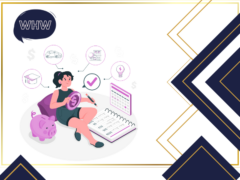What is bankruptcy?

Bankruptcy is a legal process that provides relief to individuals and businesses struggling with overwhelming debt. It allows them to either eliminate or restructure their debt under the protection of the bankruptcy court. Understanding bankruptcy is crucial for making informed financial decisions. For americans considering bankruptcy, knowing the implications and procedures involved is essential for navigating financial difficulties.
Definition of bankruptcy
Bankruptcy is a legal status for individuals or entities that cannot repay their debts to creditors. It involves a court process to manage and discharge debt.
Legal framework
Bankruptcy laws vary by country, but they generally provide a way for debtors to get a fresh start while ensuring creditors are treated fairly. In the US, bankruptcy is governed by federal law under the Bankruptcy Code.
Purpose
The primary purpose of bankruptcy is to provide relief to debtors and a fair distribution of assets to creditors. It aims to help individuals and businesses recover from financial distress and start anew.
Types of bankruptcy
There are several types of bankruptcy, each designed for different situations and types of debtors. Understanding these types can help you determine the best option for your situation. These types are based on the Bankruptcy Code chapters.
See below the main chapters:
Chapter 7 bankruptcy
Chapter 7 bankruptcy, also known as liquidation bankruptcy, involves the sale of a debtor’s non-exempt assets to pay off creditors. It is available to both individuals and businesses. This type of bankruptcy is suitable for those with limited income and significant unsecured debt.
Chapter 13 bankruptcy
Chapter 13 bankruptcy, or reorganization bankruptcy, allows individuals with regular income to create a repayment plan to pay off their debts over three to five years. It is ideal for those who want to keep their assets and have the means to make regular payments.
Chapter 11 bankruptcy
Chapter 11 bankruptcy is primarily used by businesses to restructure their debts and continue operations. It allows companies to reorganize their finances and negotiate new terms with creditors. This type of bankruptcy is complex and often involves significant legal and administrative costs.
Other chapters
Other types of bankruptcy include Chapter 9 for municipalities and Chapter 12 for family farmers and fisheries. These specific types address unique situations and provide tailored solutions for different types of debtors.
Eligibility for bankruptcy
Eligibility for bankruptcy depends on several factors, including the type of bankruptcy and the debtor’s financial situation. Understanding these criteria is essential for determining if bankruptcy is a viable option.
Means test
For Chapter 7 bankruptcy, debtors must pass a means test, which compares their income to the median income of their state. This test determines eligibility based on the debtor’s ability to repay their debts. Failing the means test typically redirects individuals to Chapter 13 bankruptcy.
Trustee appointment
After filing, a trustee is appointed to oversee the case. The trustee reviews the debtor’s financial information, administers the bankruptcy estate, and ensures compliance with the bankruptcy laws. The trustee also conducts a meeting of creditors where the debtor answers questions about their financial situation.
Impact of bankruptcy
Bankruptcy has significant impacts on both debtors and creditors. Understanding these effects can help you navigate the consequences of filing for bankruptcy.
Credit score
Filing for bankruptcy has a substantial negative impact on your credit score. A Chapter 7 bankruptcy remains on your credit report for ten years, while a Chapter 13 bankruptcy stays for seven years. This can affect your ability to obtain credit in the future.
Asset liquidation
In Chapter 7 bankruptcy, non-exempt assets are liquidated to pay off creditors. Exempt assets, such as necessary household items and a portion of home equity, are protected from liquidation. Understanding which assets are exempt can help you prepare for the process.
Debt discharge
Bankruptcy discharges certain debts, meaning you are no longer legally required to pay them. However, not all debts can be discharged, such as student loans, alimony, and child support. Knowing which debts can be discharged is crucial for planning your financial recovery.
Rebuilding credit
After bankruptcy, rebuilding your credit is essential. This involves managing your finances responsibly, paying bills on time, and gradually re-establishing credit through secured credit cards or small loans. Consistent and responsible financial behavior can help improve your credit score over time.
Alternatives to bankruptcy
Bankruptcy is a serious decision and may not be the best option for everyone. Exploring alternatives can help you find a suitable solution to your financial difficulties.
Debt consolidation
Debt consolidation involves combining multiple debts into a single loan with a lower interest rate. This can simplify payments and reduce the overall cost of debt. It is a good option for those with manageable debt levels and the ability to make regular payments.
Debt settlement
Debt settlement involves negotiating with creditors to reduce the total amount of debt owed. This can be done independently or through a debt settlement company. Debt settlement can be an effective way to reduce debt, but it can also impact your credit score.
Credit counseling
Credit counseling provides financial education and assistance with managing debt. A credit counselor can help you create a budget, develop a debt repayment plan, and provide guidance on financial management. Credit counseling is a valuable resource for those struggling with debt.
Personal loans
Personal loans can be used to consolidate debt and simplify payments. They often have lower interest rates than credit cards and can help you manage debt more effectively. Personal loans are a good option for those with good credit and a steady income.
Legal and financial advice
Seeking legal and financial advice is crucial when considering bankruptcy. Professionals can provide guidance and help you understand your options.
Bankruptcy attorney
A bankruptcy attorney can help you navigate the complex bankruptcy process, ensure compliance with legal requirements, and represent you in court. Choosing an experienced attorney can make a significant difference in the outcome of your case.
Financial advisor
A financial advisor can help you assess your financial situation, explore alternatives to bankruptcy, and develop a plan for rebuilding your finances. Working with a financial advisor can provide valuable insights and support during the recovery process.
Summary and encouragement
Understanding bankruptcy is essential for navigating financial difficulties. By exploring your options and seeking professional advice, you can make informed decisions that lead to financial recovery and stability. Taking proactive steps to manage your debt can help you regain control of your finances.
Useful links
US Courts – Bankruptcy Basics – Official resource for understanding bankruptcy.
Nolo – Bankruptcy – Legal information and advice on bankruptcy.
National Foundation for Credit Counseling – Credit counseling resources and support.
Bankruptcy is a legal tool that provides relief for individuals and businesses facing insurmountable debt. By understanding the types of bankruptcy, eligibility requirements, and the filing process, you can make informed decisions about your financial future.
Exploring alternatives and seeking professional advice can also help you find the best solution for your situation. Making informed decisions can lead to a more secure financial future. Remember, bankruptcy is not the end but a new beginning for financial recovery. Taking proactive steps now can pave the way for a stable and prosperous future.
Related content

Saving or Investing: Which is the Best Option?

The U.S. Dollar A Journey Through Its History

How Financial Education Can Help Avoid Excessive Debt

What is Revolving Credit?

How to Set Financial Goals for the Future
